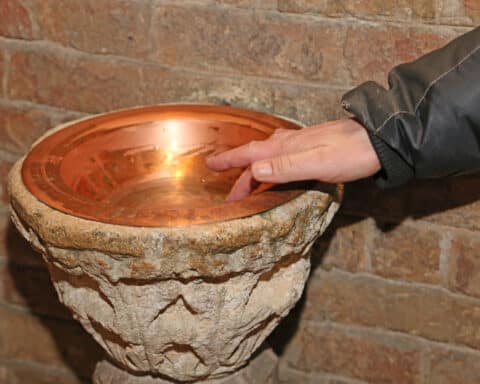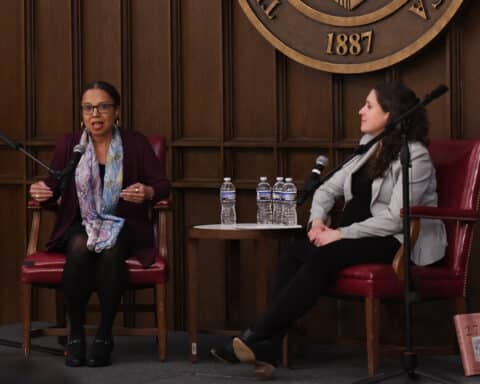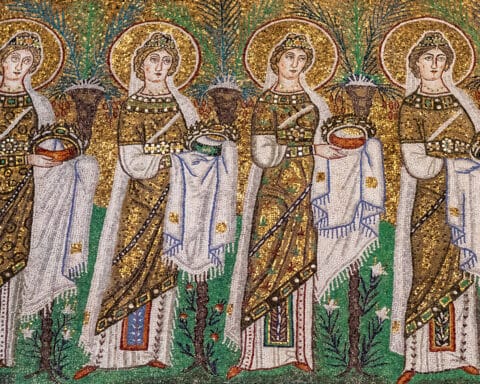In Catholic Church history, one of the most famous controversies, and most famous crises between Church and state, between pope and king, took place in the early 13th century. The antagonists were Pope Innocent III and King John of England.
Pope Innocent III
When Lotario di Segni, who took the name Innocent III, was elected pope in 1198, it was immediately clear that he would be dominating in his role as supreme pontiff. His intent was to effectively reign as spiritual leader over millions of Catholics and, even more vigorously, use the powers of the Church to control the ruling houses of Europe.
He was not the first pope who contrived to expand the role of the Church into the affairs of state, but Innocent III would be more successful in this regard than any pope before or after his time. Among his accomplishments was the wresting away from the monarchies their right to fill ecclesiastical vacancies and the consolidation of such appointments under the Vatican. He expanded papal supremacy to new heights and successfully interfered in the role of state governments to the extent that, during his papacy, eight European countries became vassals of the Holy See.
On the day he was installed as pope, he told those assembled, “Who am I myself or what was the house of my father that I am permitted to sit above kings, to possess the throne of glory?” He continued speaking of himself, “See therefore what kind of servant he is who commands the whole family. He is the Vicar of Jesus Christ, the successor of Peter … he is the mediator between God and man, less than God, greater than man” (“Innocent III: Vicar of Christ or Lord of the World?” edited by James M. Powell). Until that time, all popes were considered and called the Vicar of Peter, but Innocent announced that he was the Vicar of Christ. In this capacity, he viewed his authority over the Christian world as without limit.
Innocent, schooled in law and wise beyond his 37 years, would use many means, including excommunication and the interdict (an ecclesiastical censure) to exercise Church influence over kings and kingdoms. Pope Innocent III used or threatened this disciplinary action multiple times, the most notable being against King John and the entire country of England.
| What is an interdict? |
|---|
|
Throughout Church history there are many examples of how it was used to penalize the whole for the violations of a few; the transgressions of one person could lead to taking away the religious practices of many. The Church argues that the interdict is a defensive measure, a salutary action only imposed as a last resort to achieve compliance with Church law. It was and is designed to be less severe than total excommunication, which automatically excludes those impacted from all Church activity. In the Middle Ages the interdict could be imposed either as personal or local in nature. A personal interdict, still part of canon law today, is directed against a person or a group of persons, i.e. all the priests of a diocese or even a parish. The personal interdict, which can be implemented by a bishop, stays with a person wherever they go. The local interdict was exercised only by a pope and extended over an entire diocese, or an entire country. |
King John and the Archbishop of Canterbury
King John, who reigned from 1199 to 1216, is viewed by most historians as an ineffectual leader because of his inability to get along with his subjects and with other European leaders. He was ill-tempered and stubborn, especially when it came to dealing with the expanding influence of Pope Innocent III. It is alleged that John didn’t practice his Catholic faith. On one occasion during Mass, he reportedly wrote a note to the celebrant asking him to hurry up, as the king wanted to go to lunch.
The collision of king and pope took place in 1205 when the archbishop of Canterbury died. Hubert Walter served as both chancellor of England and archbishop of Canterbury under King John. In his role as chancellor he oversaw the day-to-day affairs of government, and as archbishop he was the leader of the Catholic Church in England. In these positions he was skillful, effective and powerful, traits not lost on King John, who recognized Walter as holding the second most important position in the kingdom.
The archbishop’s central religious home was at the Canterbury Cathedral, Christ Church Abbey, where he was supported and served by a group of monks. Upon Walter’s death in December 1205, many of the junior monks at Canterbury quickly and secretly elected a member of their group, a sub-prior named Reginald, as the new archbishop. The monks had the right to elect the archbishop, but by custom it always had been someone acceptable to the king. But the monks did not trust their king, because he had shown little interest in religious matters. Additionally, there was an ongoing dispute between the monks and bishops of England as to whether or not the bishops had any role in the selection process.
In an effort to avoid the involvement of the king and the bishops, Reginald immediately was sent to Rome with the belief that he could obtain the pope’s approval before the king or bishops would know what happened. En route, the clandestinely elected Reginald began to brag to those he met about his new position, and word of the secret election soon got back to King John. The king immediately nullified Reginald’s election and put forth John de Gray, bishop of Norwich, who was loyal to the king, as the next archbishop. King John intimidated a number of the Canterbury monks into voting for his choice and asked the English bishops not to interfere with this selection. He sent the monks, who were embarrassed and submissive after being confronted, off to Rome to support de Gray. The bishops, upset that they were slighted in the selection process, also dispatched a representative to plead their concerns before the pope. Reginald, unaware that these actions were taking place, continued on to the Vatican.
The pope quickly took advantage of the chaos. Canonical law regulating ecclesiastical elections was vague, allowing Innocent to interpret the rules as he saw fit. He invoked the law by first dismissing Reginald, because he had been elected in secret, and then Bishop de Gray, because he had been named before the pope had proclaimed the invalidity of Reginald.
Innocent saw an opportunity to widen papal influence in England and in 1207 selected his trusted friend Cardinal Stephen Langton as the archbishop of Canterbury. Born in England, Langton had been living in Paris for 25 years, was teaching theology at the university and was close to the French court. The pope knew that denying the king’s choice of archbishop, a position essential to the effectiveness of the throne, would not set well with King John.
| Interdict Today |
|---|
| While not common, there have been times in recent centuries when the interdict was exercised. A case in the 21st century concerned members of a U.S. parish lay council refusing to comply with universal Church norms regarding control of parish resources. The structure of the parish subjected the pastor, appointed by the local bishop, to a lay board that controlled the parish. This emotional situation involving the Vatican led to use of the interdict, excommunication and the parish eventually withdrawing from the Roman Catholic Church. There were other cases in the United States in the 20th century: parish members rioted and blocked the installation of a new pastor; a group of parishioners physically kept a black priest from entering a chapel; a priest was found to be widely advocating abortion. All these actions resulted in the bishop imposing an interdict.
Canon law specifies the following situations as being subject to automatic interdict (latae sententiae): physical violence against a bishop (Canon 1370); someone other than a priest attempting to preside over the Mass or hear confessions (1378); falsely accusing a priest of soliciting adultery during the sacrament of penance (1390); a religious attempting to marry while under the vow of celibacy (1394). Also, a person who celebrates or receives a sacrament through the use of simony is subject to an interdict or suspension (1380) and an interdict is imposed on someone who promotes a plot against the Church. (1374). |
King John reacts to the pope
Clearly, this was a precedent-setting attempt by the pope and, if successful, the most important religious position outside Rome would forever serve at the inclination of the Holy See. It seemed to John that the archbishop of Canterbury should be acceptable and responsible to the king, not a Vatican-appointed delegate who lived in England but was responsible to the pope. Said another way, the archbishop should be England’s representative to the Holy See, not vice versa.
King John complained that the pope had uncourteously dismissed the king’s selection of John de Gray, consecrated someone who was unknown to the king and, further, that the pope’s choice was an individual friendly with England’s enemy (France). Had the pope at least consulted with John, the situation may have had a different result, but there would be no compromise. Innocent announced his selection in a letter to the king and tried to pacify him by including a gift of four very valuable rings. But John would have none of it and angrily proclaimed that Langton was not welcome in England as archbishop. The king also sent his knights to oust the monks at Canterbury, who had conducted the secret election and had switched their allegiance to the pope.
The pope responded by directing three English bishops to meet with the king and explain that in accordance with canon law, the continued ill treatment of the clergy and failure to accept Langton would result in England being placed under a nationwide interdict. Innocent, despite past custom, was convinced that the authority to select the archbishop rested with the pope.
The interdict
At the threat of an interdict, King John flew into a rage, threatening the life and livelihood of every clergyman in the country. On March 23, 1208, the English bishops, at the command of Pope Innocent III, laid a local interdict on all of England. This action suspended all religious services, denied Mass to everyone except the clergy, took away all the sacraments save confession and viaticum for the dying, and baptism, which had to be done privately. Couples could not be married in the Church and no one could be buried in consecrated Catholic cemeteries. Every Englishman suffered because of the actions of the king.
In response, King John increased his persecution of the clergy in England by confiscating their lands, not offering them any protection and not supporting them financially. In an effort to insure support of the most powerful land barons, he began taking hostages from members of their families. This act, and many other selfish decisions by the king, served to infuriate the barons and lords of the land. The king’s refusal to comply with the interdict and his bad treatment of the clergy caused the pope in 1209 to excommunicate King John and absolve anyone from their sworn allegiance to the crown of England.
The Catholics living in England in the early 13th century had difficulty understanding why they could not practice their faith and could not participate in the Holy Sacrifice of the Mass in their own country. Every significant act in a Catholic’s life involves the Church, and parishioners in the Middle Ages believed that without the Church and the sacraments they were bound to hell. This, of course, was the purpose of the local interdict imposed by Innocent III; that is, he sought to take advantage of this belief and bring public pressure on King John. The clergy were in an awful position. They were damned by the pope if they administered to the faithful, and damned by the faithful if they didn’t.
History is not clear if the English populace rose up against King John. In fact, there is some evidence that many were angry with the Church. They began to question the sincerity and teachings of the Church if the sacraments could be taken away through no fault of the faithful. Without the clergy’s influence, it did not take long for heresies to surface; crime and vice increased. The pope realized that neither the excommunication nor the interdict was having the effect he expected, so in 1212, Innocent deposed King John and encouraged King Phillip of France to invade England and take the throne.
Recognizing the threat of a powerful invasion and aware that the lords of his country would not support him, King John finally succumbed to the pope. Being in no position to bargain, John not only gave in on the issue of the archbishop but in a submissive, ceremonious rite, surrendered his entire kingdom to the pope. England would now become a papal fief and King John would rule as a vassal of the Holy See. On May 13, 1213, the king publicly swore obedience in perpetuity to Innocent III and all his papal successors; he promised to defend the Holy Catholic Church, make annual payments to Rome, and restore the goods and property he had confiscated from the English clergy. The pope, in turn, required the king’s former subjects to once again give loyalty to the crown. These concessions put John under the protection of the Holy See and the anticipated invasion by the French was immediately negated. In reality, it was the invasion and the likely loss of his empire that King John feared most. That he was contrite about his previous relationship with the Church or concerned about his soul is doubtful.
| Timeline |
|---|
|
|
| St. Augustine of Canterbury |
|---|
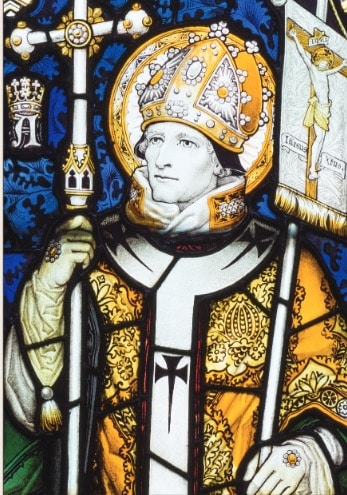 Canterbury. Shutterstock.com St. Augustine of Canterbury was largely responsible for evangelizing to England. Augustine was born in Italy to a noble family. At a young age, he entered monastic life in Rome with a Benedictine order. Pope Gregory, a friend of Augustine, sent him and his companions to convert England in the year 595. After many hardships, they were able to convert England’s royalty and baptized over ten thousand people by 597. Augustine died in 604, and he is widely known as the “Apostle of the English.” He paved the way for the work to be done by Pope Innocent III 600 years later.
|
Magna carta
On July 20, 1213, King John received absolution from the Church, but the interdict was not lifted until the Vatican was convinced of John’s sincerity. At last, in June 1214, after six years, the interdict was removed from England.
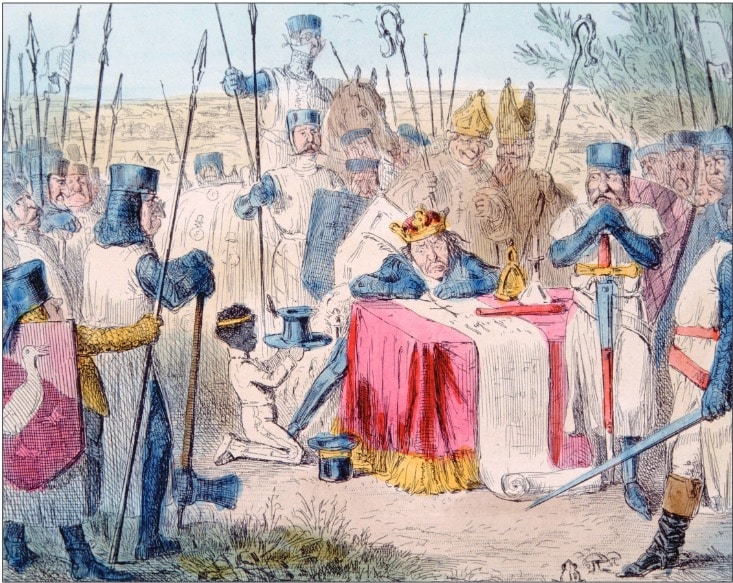
Lifting the interdict did not end the relationship between the king and the pope. Two years later, the English lords and barons, who had been badly treated by the king and who didn’t agree with the surrender of England to the pope, rose against their king. Under the leadership of Archbishop Langton, they forced the king to sign the Magna Carta, which is the basis of English, and later American, constitutional liberties. Among its contents, it addressed freedoms of the Church, political reform, the right to trial by jury, the right of habeas corpus and the principle of no taxation without representation. In short, “it virtually asserted the principle that the king was subject to the law of realm as well as his meanest vassal” (“A History of England,” Benjamin Terry).
The king, obligated to comply with the laws, appealed to the pope that he had signed under duress. The pope, siding with his vassal, excommunicated the leaders opposing John and suspended Langton from his role as archbishop. The land barons, taking a page from Innocent’s book, deposed John from the monarchy in 1216 and pleaded to the French for help. But before this next act could be fully played out, the pope and king both died (July 16, 1216, and October 19, 1216, respectively), ending one of the greatest and most controversial relationships in Church history. The Magna Carta would be reissued and revived under the reigns of Kings Henry III (r. 1216-72) and Edward I (r. 1272-1307).
Papal prestige and power reached its zenith under Innocent III. He is regarded as being among the elite statesmen of the Middle Ages and, in sum, one of the great popes of the Catholic Church. However, he has not been raised to the altar of sainthood. Some regard him as more of a monarch than a pope. Also, perhaps the interdicts, the violent crusades during his reign and his condemnation of the Magna Carta have impacted his consideration for sainthood. Whatever the reasons, a cause for his canonization has never been opened.
D.D. Emmons writes from Pennsylvania.
| Banning Communion to politicians |
|---|
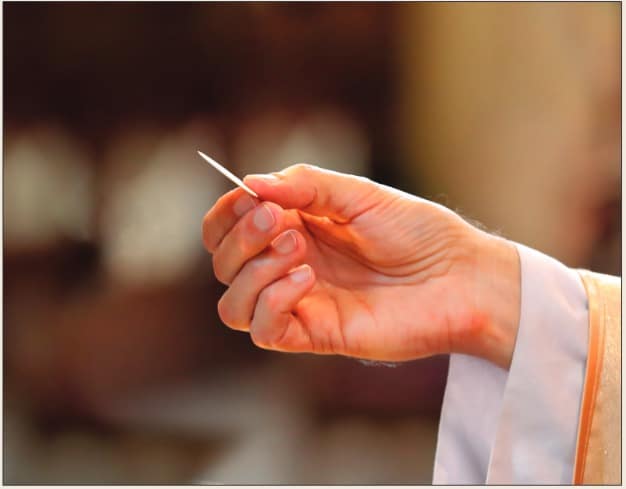 The debate regarding whether bishops should excommunicate or ban Communion from Catholic politicians who directly support legislation that goes against Church beliefs has filtered through the news in recent months as many states, namely New York and Illinois, have passed radical abortion bills. In a June 6 news release, the Diocese of Springfield, Illinois, reported that Bishop Thomas J. Paprocki had barred House Speaker Michael Madigan and Senate President John Cullerton, both Catholics, from receiving Communion in the diocese “due to their leadership roles in promoting the evil of abortion by facilitating the passage of Senate Bill 25 this legislative session and House Bill 40 in 2017.” The statement also added that “Illinois Catholic lawmakers who voted for either of these abortion bills are not to present themselves to receive holy Communion.” So, what is the difference between an interdict and banning politicians from the sacraments? The main distinction is who is directly affected. In previous centuries, the Church and state were closely connected, and the reigning bishop and pope had authority (or at least a say) over what the governing leaders did. This said, by enacting an interdict over the region, thus affecting the people under the secular leadership, the governmental rulers would be pressed to obey the Church in order to bring back the sacraments to the people of the region. Today, however, with politics and religion attempting to live in separate spheres, punishing the people for the mistakes of the leaders does not work. Instead, more direct action is necessary. Banning communion still urges politicians to change their positions, but it does not have the larger consequences on an interdict. |

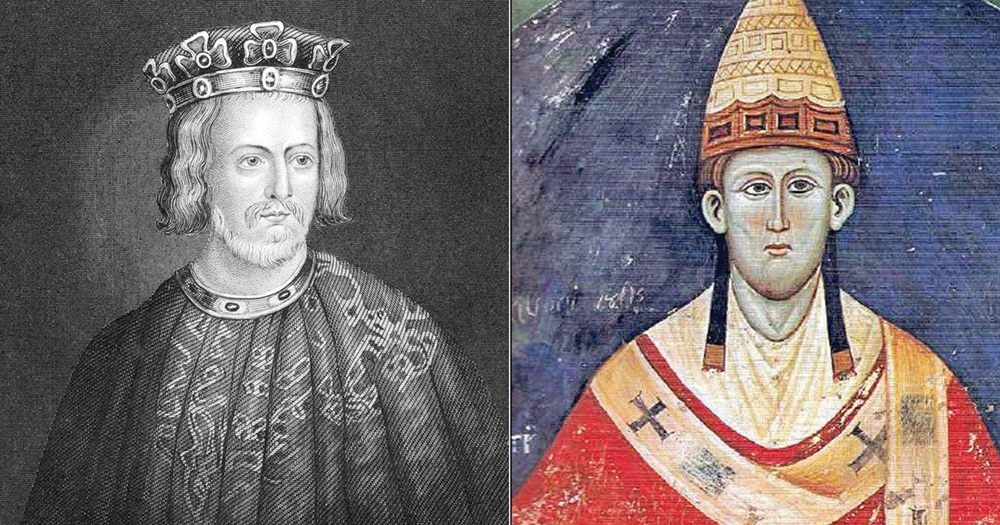
 The interdict, not widely imposed today, was a powerful disciplinary tool of the Church during the Middle Ages. It denied Church sacraments and public worship to an individual, a region or state not willing to adhere to the laws of the Church. Once imposed, the interdict remained in effect until the wrong has been corrected, which might last for only a brief period or extend out for years.
The interdict, not widely imposed today, was a powerful disciplinary tool of the Church during the Middle Ages. It denied Church sacraments and public worship to an individual, a region or state not willing to adhere to the laws of the Church. Once imposed, the interdict remained in effect until the wrong has been corrected, which might last for only a brief period or extend out for years.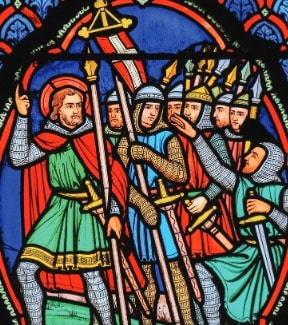 596 – St. Augustine of Caterbury evangelizes England
596 – St. Augustine of Caterbury evangelizes England